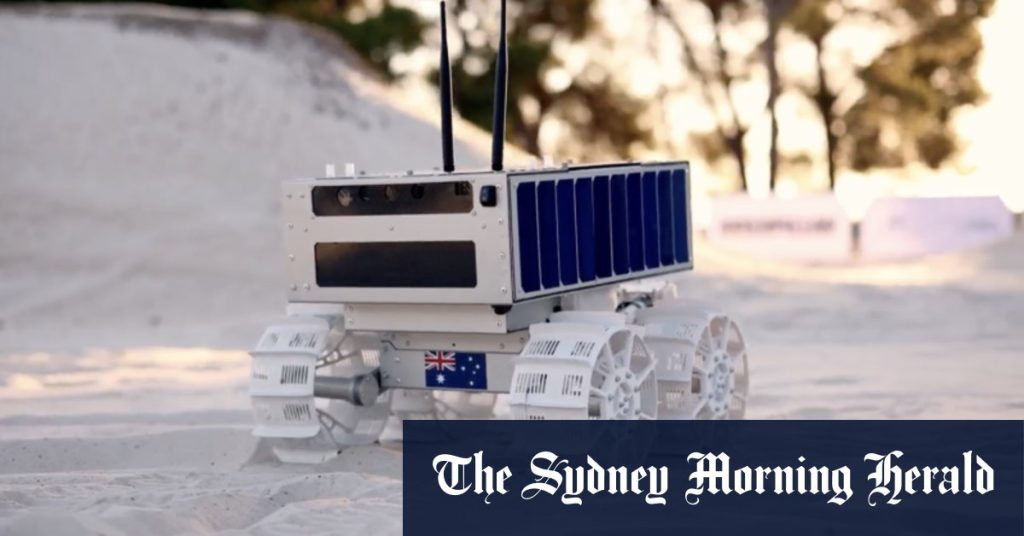The lunar environment presents a unique set of challenges for robotic exploration. Vacuum conditions, for instance, can induce unexpected phenomena such as tin whisker growth, where tin surfaces sprout microscopic conductive filaments that can cause short circuits, and vacuum welding, where metal components in close proximity can fuse together. These peculiarities necessitate careful material selection and design considerations for any equipment destined for the lunar surface. Adding to the complexity is the nature of the lunar regolith, the layer of loose, unconsolidated rock and dust covering the moon’s surface. This fine, abrasive material, with particle sizes ranging from 20 to 70 microns, poses a significant threat to moving parts and mechanisms due to its sharp, irregular shape and inherent stickiness caused by electrostatic properties. The abrasive nature of regolith can cause excessive wear and tear on components, impacting the longevity and reliability of robotic systems.
To address these challenges, engineers are developing specialized technologies for lunar rovers, such as the Australian-designed Roo-ver. This suitcase-sized, semi-autonomous rover is equipped with robust wheels featuring blades designed to effectively navigate the challenging lunar terrain. These blades allow the rover to dig into the fine regolith, providing traction and stability in the low-gravity environment. The semi-autonomous nature of the rover signifies its ability to operate with a degree of independence, executing pre-programmed tasks and navigating obstacles without constant human intervention. This capability is crucial for efficient exploration and data collection in the remote and unforgiving lunar environment. The development of Roo-ver represents a significant step forward in robotic lunar exploration, showcasing innovative solutions to the unique challenges posed by the moon’s environment.
Roo-ver’s development signifies Australia’s increasing contribution to international space exploration efforts, specifically the NASA-led Artemis program. The Artemis program aims to return humans to the moon, establish a sustainable presence, and lay the groundwork for future missions to Mars. Roo-ver is scheduled for lunar deployment within this decade, further solidifying Australia’s role in the Artemis program. This involvement not only advances scientific understanding of the moon but also stimulates the Australian space sector, creating jobs and fostering technological advancements with broader applications. The project showcases Australia’s capabilities in robotics, automation, and advanced engineering, reaffirming its position as a significant player in the global space industry.
The collaboration between Australia and NASA on the Artemis program underscores the international nature of space exploration, highlighting the importance of shared resources and expertise in achieving ambitious goals. Australia’s contribution through Roo-ver is expected to enhance the overall success of the Artemis missions, providing valuable data and insights into the lunar environment. The data collected by Roo-ver will contribute to a deeper understanding of lunar geology, resource potential, and the feasibility of long-term human presence on the moon. Furthermore, the rover’s performance will inform the development of future robotic missions, pushing the boundaries of lunar and planetary exploration.
The technological advancements driven by the Roo-ver project extend beyond the realm of space exploration, promising tangible benefits for various industries on Earth. The expertise gained in robotics, automation, and advanced engineering has the potential to revolutionize terrestrial industries such as manufacturing, mining, and resource management. Specifically, the knowledge acquired in navigating challenging terrains and operating in extreme environments can be applied to developing autonomous systems for remote operations on Earth, improving efficiency and safety in hazardous industries. Moreover, the materials and design principles employed in Roo-ver’s construction can inspire the creation of more robust and resilient equipment for terrestrial applications, benefiting sectors ranging from construction to transportation.
In summary, the Roo-ver project represents a significant milestone in Australia’s space exploration endeavors and a valuable contribution to the global pursuit of lunar understanding. The rover’s innovative design, tailored to overcome the unique challenges of the lunar environment, showcases cutting-edge advancements in robotics and automation. Beyond its scientific value, Roo-ver’s development fosters economic growth within the Australian space sector and promises to translate technological advancements into tangible benefits for terrestrial industries. This project demonstrates the multifaceted nature of space exploration, highlighting its potential to drive innovation, inspire future generations, and ultimately expand humanity’s reach beyond Earth.

